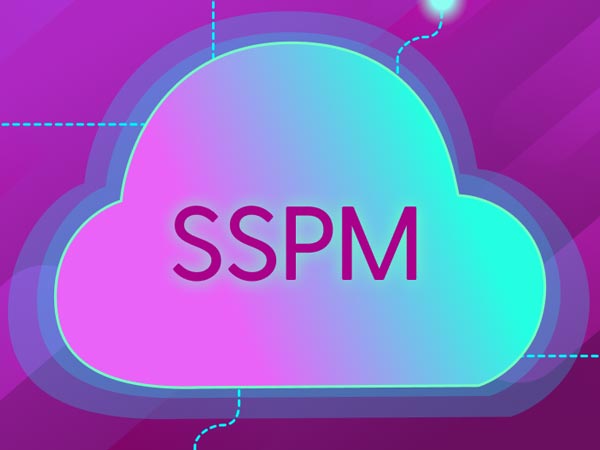SaaS security posture management (SSPM) refers to the use of automated tools and technologies to identify and manage security risks within Software as a Service (SaaS) applications. It focuses on assessing and monitoring the security posture of SaaS applications to ensure that they adhere to best practices and meet security requirements.
SSPM solutions typically provide comprehensive visibility into the security configuration and settings of SaaS applications. They analyze various aspects such as user access controls, data encryption, authentication mechanisms, compliance standards, and overall security hygiene.
What Is SaaS Security Posture Management (SSPM)?
SaaS Security Posture Management (SSPM) is an automated security tool designed to monitor security risks specifically in software-as-a-service (SaaS) applications. Its main purpose is to identify various security issues, such as misconfigurations, unnecessary user accounts, excessive user permissions, compliance risks, and other cloud security concerns.
By utilizing SSPM, organizations can proactively identify and address potential vulnerabilities, misconfigurations, or security gaps within their SaaS applications. The automated nature of SSPM allows for continuous monitoring and assessment of the security posture, enabling organizations to promptly detect and remediate any security issues.
SaaS Security Posture Management plays a crucial role in maintaining the security and integrity of SaaS applications, helping organizations mitigate risks and ensure a robust security framework for their cloud-based software solutions.
While Cloud Security Posture Management (CSPM) provides a comprehensive overview of an organization’s entire cloud infrastructure, SSPM focuses solely on SaaS applications. Examples of these applications include Salesforce, Slack, and Office 365. Businesses that primarily rely on SaaS rather than using other cloud infrastructure options like platform-as-a-service (PaaS) and serverless computing can benefit more from implementing SSPM rather than CSPM.
What is SaaS security posture?
SaaS security posture refers to the readiness of a system to defend against potential attacks. In the case of SaaS applications, which are hosted in the cloud rather than locally on internal networks, the concept of security posture is specifically applied to these applications.
Compared to traditional network security, securing SaaS applications presents unique challenges. Since these applications are hosted remotely, they are largely beyond the direct control of an organization. Additionally, they are accessed via the internet from various devices, which increases the risk of unauthorized access or unintentional data leaks.
To mitigate these risks, SSPM tools are utilized to identify and address security gaps in SaaS applications. These tools automate the detection of security vulnerabilities, reducing the potential threat of human errors during setup and configuration.
How SaaS Security Posture Management Work?
SaaS Security Posture Management (SSPM) operates by conducting regular analysis of an organization’s SaaS applications, focusing on the following aspects:
- Configurations: SSPM examines the security settings and configurations of SaaS applications to identify any potential errors or vulnerabilities that may expose data to the internet. By pinpointing these issues, SSPM helps ensure that proper security measures are in place.
- User permission settings: SSPM assesses the user permissions within the organization’s SaaS applications. This includes identifying unnecessary or inactive user accounts, which can serve as potential entry points for unauthorized access. By detecting and addressing these accounts, SSPM helps reduce the risk of security breaches.
- Compliance: SSPM evaluates the security risks within SaaS applications that may lead to non-compliance with data security and privacy regulations. By identifying and addressing these risks, organizations can ensure that their SaaS applications adhere to relevant regulatory requirements.
When SSPM detects risks in any of these areas, it generates automated alerts and notifications for the organization’s security teams. Furthermore, certain SaaS Security Posture Management tools can even automatically mitigate some of these risks, providing an added layer of protection and reducing the response time required to address security vulnerabilities.
What is The Difference Between SSPM and CSPM?
SSPM and CSPM differ in terms of their scope and focus. While SSPM specifically concentrates on analyzing and securing SaaS applications, CSPM takes a broader approach by examining entire cloud deployments across various levels of the computing stack. This includes Infrastructure-as-a-Service (IaaS), Platform-as-a-Service (PaaS), SaaS, containers, and serverless code.
In addition to their different scopes, CSPM tools may possess certain capabilities that are not typically found in SSPM tools. For example:
- Vulnerability detection: CSPM tools have the ability to identify vulnerabilities within cloud software that can be exploited by attackers. This helps organizations proactively address potential security risks and strengthen their overall cloud infrastructure.
- Incident response: Some CSPM tools offer automated incident response capabilities, allowing them to take immediate action to mitigate security incidents that are in progress. This helps minimize the impact of security breaches and reduces response time.
If you’re interested in learning more about CSPM, you can refer to the article “What is cloud security posture management (CSPM)?” for further information and details on the topic.


